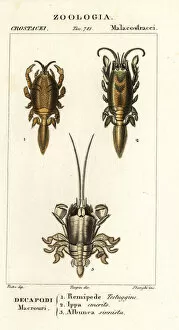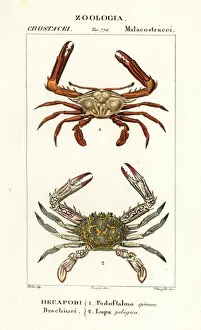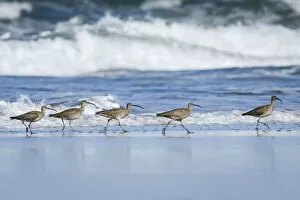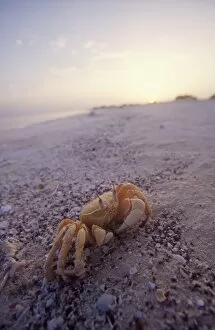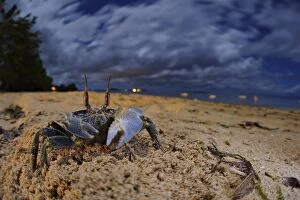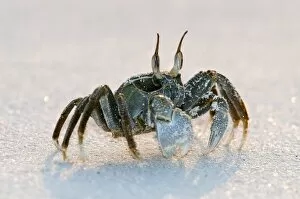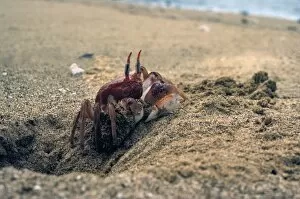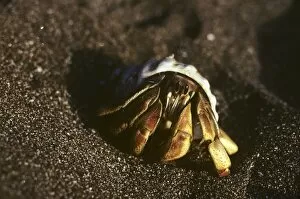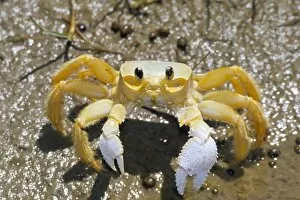Sand Crab Collection
The sand crab, also known as the ghost crab or Genus ocypode, is a fascinating creature found in various parts of the world
For sale as Licensed Images
Choose your image, Select your licence and Download the media
The sand crab, also known as the ghost crab or Genus ocypode, is a fascinating creature found in various parts of the world. In Parque Nacional de Fernando de Noronha, Brazil, an American oystercatcher parent can be seen feeding its chick with a sand crab called Emerita analoga. These species of mole crabs or they are an important part of their diet. Crabs come in different shapes and sizes, and the periscope crab and flower crab are no exception. Their unique appearances make them stand out among other crustaceans. Some strange crabs have even been depicted in colored engravings throughout history. Whimbrels, such as Numenius Phaeopus, have developed a keen eye for spotting sand crabs on beaches in Oregon's Newport region. They rely on these small creatures for sustenance during their migratory journeys. The sandy shores around the world provide habitats for various types of crabs. Siyull Island in Egypt's Red Sea is home to a captivating scene where a lone crab scuttles across the warm sands. Similarly, Nosy Be and Ilha do Mel islands offer picturesque beach settings where adult ghost crabs roam at dusk. Ghost crabs are particularly intriguing due to their nocturnal habits and ability to blend into their surroundings seamlessly. Their presence adds an air of mystery to coastal areas worldwide. Whether it's observing an American oystercatcher nurturing its young with sand crabs or marveling at the diversity within this species itself, there is much to appreciate about these remarkable creatures that call sandy beaches their home.

